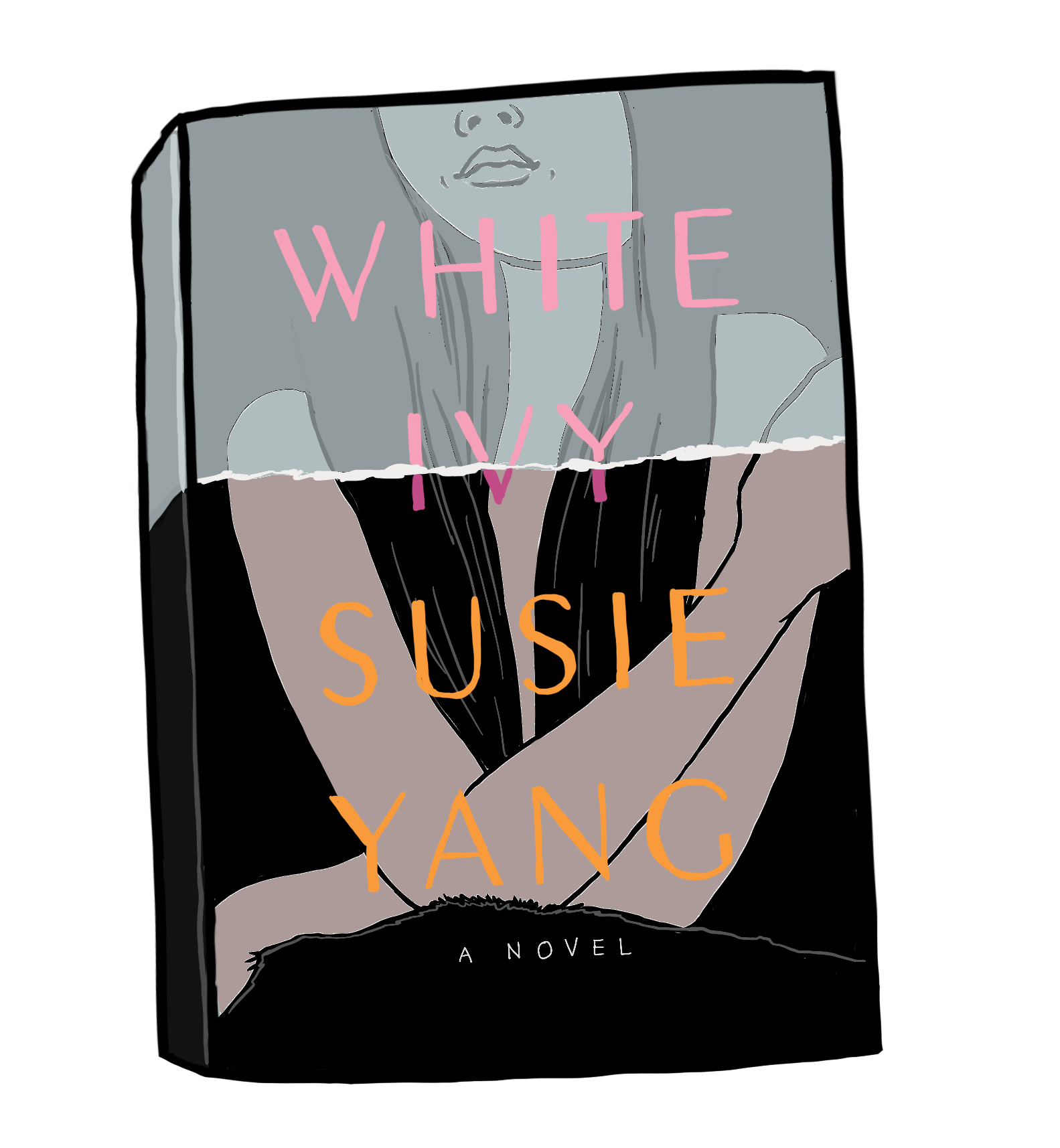
Susie Yang’s masterful debut novel “White Ivy” is now available for checkout at Watzek library. Longlisted for the Center for Fiction’s First Novel Prize, “White Ivy” and its inventive take on the Chinese-American immigrant story will not stay on the shelves for long. Any Lewis & Clark reader lucky enough to check it out will discover a tour de force that refuses to conform to genre.
Readers meet the novel’s main character Ivy Lin in middle school, asserting herself on Yang’s fast-turning pages as a compulsive liar and kleptomaniac. Endearingly boy-crazy, 14-year-old Ivy steals a diary from a big-box store to write and gush about her classmate Gideon Speyer. Not only is the object of Ivy’s affection a future Brad Pitt lookalike, Gideon and his family have an old money Massachusetts fortune and a summer cottage.
Anyone cautious about “White Ivy” confirming the model minority stereotype about East Asian Americans might have cause to worry in its opening chapters. The opening cover flap calls Ivy’s admittedly domineering mother, “a Tiger Mom.” And as early as on page three, Ivy’s parents pressure her to become a doctor.
However, Yang subverts these dangerous stereotypes about Chinese-Americans, beginning when Ivy fumbles her high school chemistry and algebra grades. Ivy is no submissive “Madame Butterfly” stereotype either; her awkward teenage forays into dating and discovering her own sexuality are portrayed with dignity.
The novel shifts into high gear when Ivy, now a discontented first grade teacher at age 26, reconnects with Gideon. His insufferable friends and two-faced sister, Sylvia, go on two thousand dollar brunch dates and buy each other yachts as wedding presents. Not since E. Lockhart’s “We Were Liars” has there been such a biting send-up of the one-percenters.
As with any psychological thriller exposing the seedy side of old money America, expect some twists. Unfortunately, Yang tends to over-foreshadow until the reader knows what will happen next. With how often the same characters walk in and out of Ivy’s first 28 years of life, it is a wonder that there are more than 10 people in this fictionalized New England. I would also recommend not reading the synopsis on the inside flap, as it effectively spoils one of the novel’s more thrilling plot points.
Even so, Ivy and her capricious self-sabotaging will still manage to keep you guessing until the last page. “White Ivy” seems tailor-made for the kind of soap-operatic-but-classier adaptation that has brought its contemporaries “Big Little Lies” and “Little Fires Everywhere” to the silver screen.
In a move reminiscent of Amy Tan’s “The Joy Luck Club”, “White Ivy” also devotes ample time to Ivy’s mother, Nan, and her grandmother, Meifeng. Flashing back to 44 years earlier in the Sichuan Province of China, the narrative reveals how they survived during Mao’s return to power. As chairman of the Chinese Communist Party, Mao and his regime are responsible for the deaths of 40 to 80 million people.
Here again, Yang dodges Sinophobic stereotypes about this historical period, choosing to focus instead on Nan’s fragile high school romance and how the Red Guards destroyed it. Ivy’s family stories add an intergenerational layer to the novel that ties it in a neat bow.
“White Ivy” is a triumph, a novel equal parts tender coming-of-age story, social satire and moving portrait of a Chinese-American immigrant family. With such an intriguing first effort, Susie Yang is one to watch.
Subscribe to the Mossy Log Newsletter
Stay up to date with the goings-on at Lewis & Clark! Get the top stories or your favorite section delivered to your inbox whenever we release a new issue.

Leave a Reply